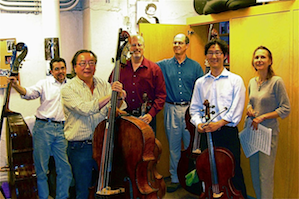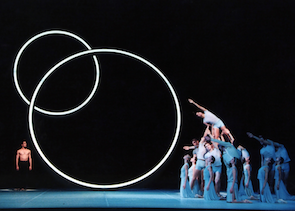
Photo courtesy of Hamburg Ballet
Either way, it's the vital component of ballet, even if it doesn't always command the attention it richly deserves: Live or on tape, the music for dance is its heartbeat. Few ballet companies today have the budget for an orchestra or even a live ensemble — and there is still time to help Ballet San Jose's effort to keep musicians in the pit — so San Francisco Ballet's expansive and expensive music program is of great importance.
Martin West, the company's music director and principal conductor, is happy with SFB's "huge range of music for the season." He explains:
From the Baroque of Scarlatti to the contemporary, such as John Adam’s Guide to Strange Places, it’s never a dull day. We will revisit Rachmaninov’s Symphonic Dances from last year, which will give us a chance to explore this fantastic score even more deeply.It is many years since the orchestra played Prokofiev’s Cinderella, and I haven’t felt so much anticipation from the orchestra members to play a piece for a long time: fantastically inventive, tuneful, and magical.
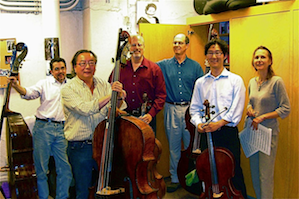
Photo by Mark Drury
West is rightly proud of the Ballet Orchestra's flexibility, the way it deals with that wide range of music:
We sometimes span the centuries within just one ballet, let alone an evening. For example, [company artistic director] Helgi Tomasson's Criss-Cross requires us to play Scarlatti followed by Schoenberg and it’s not easy to jump from style to style. Yet this orchestra plays every piece equally well in my opinion. Because we perform each piece at least seven times a season, we really have time to develop our interpretation through the run.We’ve been lucky enough to be asked to make a few recordings in recent seasons — they’ve been such a great learning experiences for everyone and the sessions have been instrumental in helping us raise our standards to what we hope are ever higher levels.
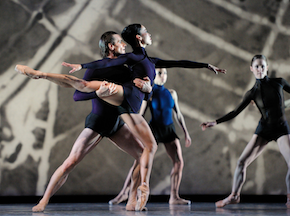
Asked to create a subscription package specifically for music lovers, West selected three programs, saying that it's difficult for him to leave anything out.
Program 2: (Feb. 13-19), Nijinsky, John Neumeier's full-evening ballet drama about the great dancer's descent into schizophrenia, is set to Chopin's Prélude No. 20, Op. 28 (Funeral March); Schumann's Faschingsschwank aus Wien ("Carnival Scenes from Vienna"), Op. 26, No. 1; Rimsky-Korsakov’s Scheherazade, and its second half to the Shostakovich Symphony No. 11 (The Year 1905).
Program 6: (April 9-20) is West's second pick, with Dvořák’s Piano Quintet in A Major for Val Caniparoli’s Ibsen’s House, bracketed by dances set to two Russian orchestral showcases: Rudolf Nureyev’s Raymonda Act 3, to Glazunov’s music and Edward Liang’s Symphonic Dances to Rachmaninov's eponymous work. The final piece composed by one of the great musicians of any age, Symphonic Dances never ceases to uplift and inspire," says West.
Program 7: (April 11-21) has "three pieces that challenge every facet of an orchestra’s skills" — Tchaikovsky’s Francesca Da Rimini (choreographed by Yuri Possokhov); Tomasson's Criss-Cross, juxtaposes a piece by Scarlatti with a work of Arnold Schoenberg "in which he took the ideas and themes of Handel and brought them into his own sound world"; and Stravinsky’s Symphony in Three Movements (choreographed by Balanchine), "the first major piece he wrote after his immigration to the U.S. — inspired by the events of World War II, it's turbulent, angular, and chromatic, one of the masterworks of his neoclassical period."
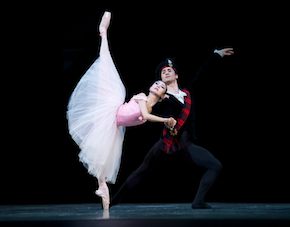
What makes playing in the pit different? The answer comes from a world-class expert, San Francisco's favorite composer-activist-bassist Shinji Eshima:
As someone who has played in both the Opera and Ballet orchestras for over 30 years, I would say the difference is the need to be flexible. This is also why it is still such a unique joy after all these years.Singers and dancers do different things each night and the interaction with the orchestra then becomes a new living and breathing organism that really makes live music come alive.
This interaction becomes mutually inspiring and thus enables all to forget about themselves and just create.
It is a singularly unique and satisfying feeling when you have a full chorus, (dancers included) full crew, lighting, sets, costumes, music, and soloists all reaching and striving for that moment in a phrase where the audience literally participates as well in the anticipation of a musical climax or resolution.
It connects all of us together, no matter what role we play in its creation. That is the magic and wonder of it all that at least for me, is ultimately convincing that there is meaning to life.
It doesn't happen every time, but once it does, there's no going back.
But then, I'm just a bass player.
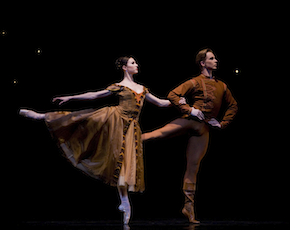
Music for the other SFB programs:
Program 1: (Jan. 29-Feb. 3): Serge Lifar's Suite en blanc to Edouard Lalo's Ballet Suite from Namouna; Jerome Robbins' In The Night to Chopin's Nocturnes Op. 27 No. 1, Op. 55 No. 1 and 2, and Op. 9 No. 2. (Details for a new work by Wayne McGregor have not been announced yet.)
Program 3: (Feb. 26-March 10: Mark Morris's Beaux to Martinů's Concerto for Harpsichord, Two Pieces for Harpsichord; Ashley Page's Guide to Strange Places to John Adams's eponymous work. (Music for a new work by Yuri Possokhov is yet to be announced.)
Program 4: (March 1-9): George Balanchine's Scotch Symphony to Mendelssohn's Symphony No. 3; Christopher Wheeldon's Within the Golden Hour to Ezio Bosso's soundtrack for I’m Not Scared; a new work by Alexei Ratmansky to Moritz Moszkowski's Suite for Orchestra, Op. 23 (From Foreign Lands).
Program 5: (March 21-28): John Cranko's Onegin to various selections by Tchaikovsky (except the opera Eugene Onegin).
Program 8: (May 3-12): Christopher Wheeldon's Cinderella to music by Prokofiev.

